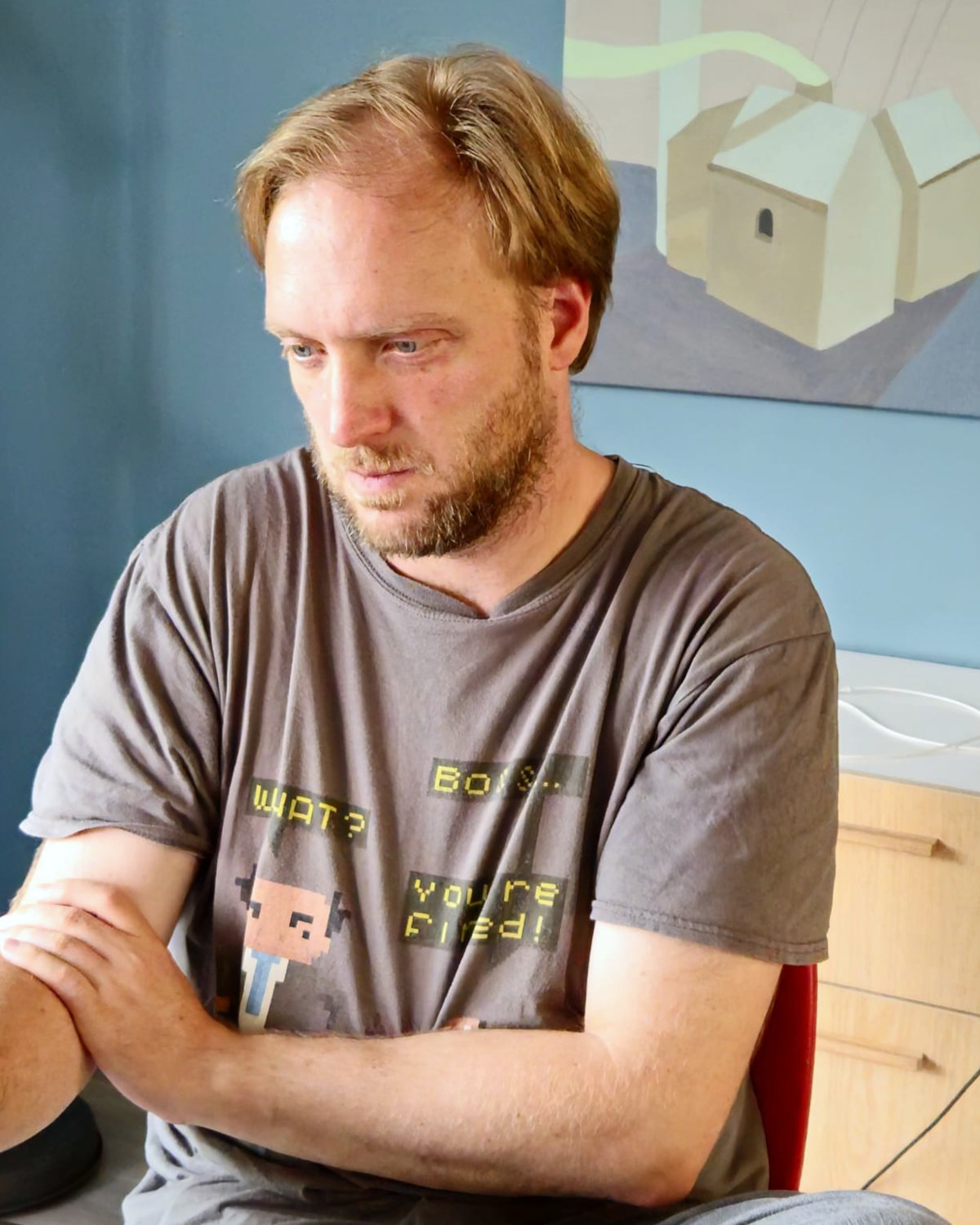In dreamy scenes Quinten Clause (Turnhout, 1983) paints a mixture of vague memories and personal doubts. Figurative words are depicted as literal images, suggesting a coded visual language. Bringing together recognizable elements in unusual combinations or compositions, he invites the viewer to attach a personal interpretation. Sometimes the result can be absurd or unreal, but the painter wants to give every work a certain readability.
Quinten believes the viewer wants to be understood by the artist. So it is not the viewer who should try to understand the artist, but the other way around. The viewer investigates the work of art for clues that show that the artist, just like the viewer, is struggling with the same doubts. Quinten often connects many stories to his own images, but also leaves an opening for the interpretations of others. He enjoys having a dialogue with his audience about this. This way he can discover new things in his own work.
Every painting starts with scribbles in his sketchbooks. Figures are first practiced a few times with a black ballpoint pen on paper until he has mastered them. Sometimes by observation and sometimes from imagination. Large areas of acrylic paint are then applied to the canvas, alternating with pencil lines that are then colored in again. They are often bright colors with few transitions and sometimes a single drop shadow. Some shapes are recolored a few times to get the right depth with light and dark. Sometimes the previous color still shines through the new layer.
Quinten also makes animations and computer games, where images do not contain too much detail. As a result, a kind of minimalism has crept into his work. Digital tricks find their way into his paintings and with his painting he also hopes to improve his computer images.
Also check Quinten's other projects
